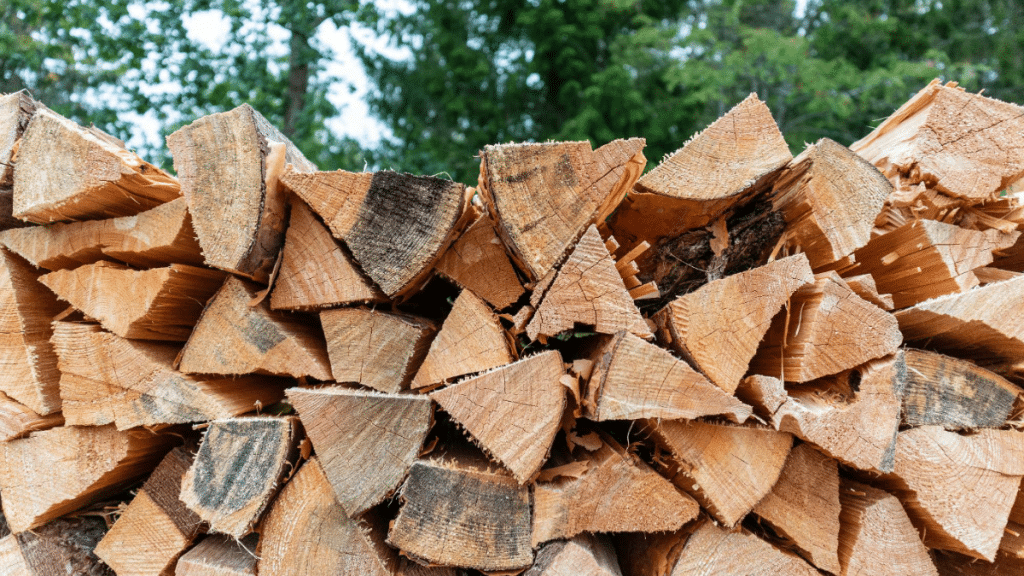Finding the perfect firewood for your fireplace can be both an art and a science. Not all wood is created equal, and your chosen type can greatly affect your home’s warmth and the hearth’s ambiance. Understanding the properties of different firewood options will ensure that you have a cozy, efficient, and enjoyable fire-burning experience. Keep reading to discover how to select the best firewood and get the most out of your fireplace.
Understanding the Different Types of Firewood for Your Fireplace

The primary division among firewood types is between hardwood and softwood. Hardwoods, like oak and maple, are denser and typically offer a longer burn time, making them ideal for usage during colder months. These woods also tend to produce more heat and less smoke, which can make your chimney and indoor air quality easier.
On the other hand, softwoods like pine and fir are easier to split and ignite due to their lower density. Softwoods are often favored for kindling or quick fires because they burn faster and hotter initially. However, they also tend to create more creosote buildup in your chimney, posing a fire hazard if not regularly cleaned.
It’s not just about hardwood versus softwood, though. Within these categories, different species have unique burning characteristics. For example, birch emits a pleasant scent and has good heat output, while cherry wood burns slowly and releases a delightful fragrance, enhancing the experience beyond warmth.
Moreover, factors such as moisture content are crucial in determining the quality of your fire. Wood that hasn’t been properly seasoned will have a higher moisture content, causing it to hiss and produce excessive smoke. This is why understanding the characteristics of your chosen firewood type is essential for a satisfactory fire-burning experience.
Hardwoods vs. Softwoods: What’s Best for Heating and Longevity?

Consider your heating goals when choosing between hardwoods and softwoods for your fireplace. Hardwoods, which are generally more expensive due to their longer burn time, are optimal for sustained heat over an extended period. They produce more consistent coals and don’t require constant replenishment, making them cost-effective in the long run.
Softwoods, while less costly up front, might seem attractive for budget-conscious buyers. They are an excellent option for seasonal users or those who need quick heat without long burning durations. Also, softwoods like pine are abundant in certain regions, making them a more accessible option for many users.
In terms of longevity, the dense fibers of hardwoods allow them to withstand the test of time better than softwoods. This can be particularly important for those who stockpile wood. Additionally, seasoned hardwoods are much less likely to harbor insects or mold, ensuring a cleaner burn and storage space.
Yet, it’s important to note that some softwoods emit a pleasant aroma when burned, enhancing the atmosphere of your home. So, your choice may also depend on personal preferences related to the sensory experience of your fire.
Region-Specific Recommendations: Best Firewood Types Across Climates
Depending on where you live, different types of firewood may be more readily available and better suited to your regional climate. In colder northern climates, hardwoods like oak, beech, and birch are highly sought after for their long burn times and high heat output. These woods help maintain a warm household throughout the prolonged winter months.
In contrast, softwoods or a mix of soft and hardwoods might offer an acceptable balance between cost and functionality in milder climates. For instance, pine-rich regions can benefit from the ease of ignition and cozy aroma of softwoods, making for an inviting, short-term fire. It’s also important to consider the environmental impact of your firewood choice. Locally sourced wood reduces transportation emissions and supports your local economy.
Non-native woods could also bring pests or diseases that might harm local ecosystems. For sustainable practices, always purchase firewood from reputable sources within your region. Don’t hesitate to ask local experts or seasoned fireplace users for recommendations based on your area’s typical weather patterns and wood availability. They can offer invaluable advice tailored to your specific climate, ensuring you choose the best firewood for your home.
Altogether, choosing the right firewood involves balancing factors like burn efficiency, heat output, and environmental impact to create the best fireplace experience. By selecting well-seasoned, region-appropriate wood, you can enjoy a warm, efficient, and safe fire that enhances comfort and ambiance.
